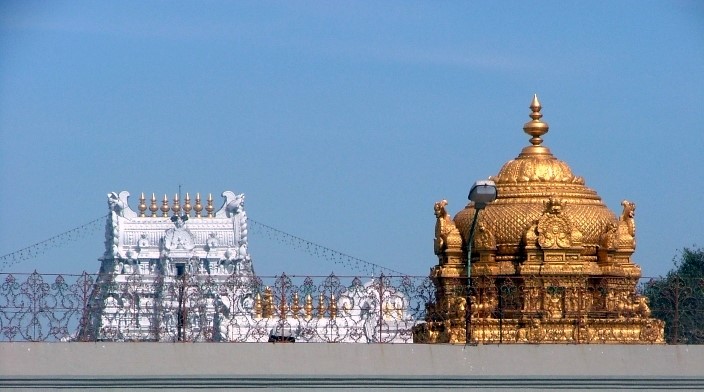Temple Architecture
The temple is the heart of Sanatana Dharma. It is where the human learns to seek, understand and reach out to the universal power called God. It is a sacred site where art, science and spirituality come together to help the devotee attune himself to the sacred vibrations of the Supreme power.
A temple makes use of all the five elements, from fire to water, images from nature and of deities, the smell of Incense and the sounds of holy instruments to create an environment to create and propagate “Bhakti”.
It is a sacred abode where the nothingness of the sanctum sanctorum also represents universality. Thus the temple also becomes an important aspect in understanding the culture, period and ideology of Sanatana Dharma.
Types of Temple Architecture
The architectural texts of Shilpa Shastra were written during early medieval times. These texts refer to the three major styles of architecture – Nagara, Dravida and Vesara.
Nagara Style of Architecture
Nagara architecture has its origins in the structural temples of the Gupta period. These temples are usually found in the lands between the Himalayas and the Vindhyas. The plan of the temple is usually a square with gradual projections in the middle of each side, which imparts a cruciform shape.
The Puri Jagannath temple is contemporaneous to the Lingaraj temple, Bhubaneswar, Orissa and is nearly 56.7 m high.
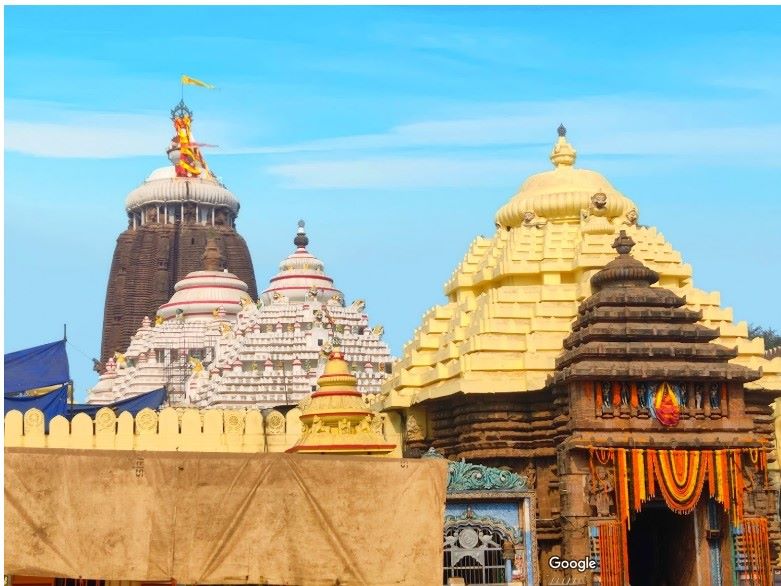
Dravidian Style of Architecture
This style of architecture is associated with the temples of South India or Deccan. The Dravida architectural style goes back to the Gupta period. The outstanding feature of the Dravida architecture is the pyramidal elevation of the Vimana. It consists of a multiplication of storey after storey, slightly reduced than the one below in a domical manner, technically known as a stupa.
Pillars and pilasters are vastly used. The square inner sanctum is set within a large covered enclosure.
Dedicated pavilions can be seen such as the Nandi mantapa in Shaivite temples and the Garuda mantapa in Vaishnavite temples. The Kailashnath temple complex at Kanchi is an excellent example of Dravidian architecture.
Vesara style of Architecture
It is a hybrid architectural style that borrows from both the Northern and Southern styles. It is a combination of both Nagara and Dravidian styles. The Vesara style reduces the height of the temple towers even though the number of tiers is retained. This is achieved by reducing the individual tiers. Sometimes the semicircular structures of some sects are also borrowed. This trend of merging styles was started by the Chalukyas of Badami.
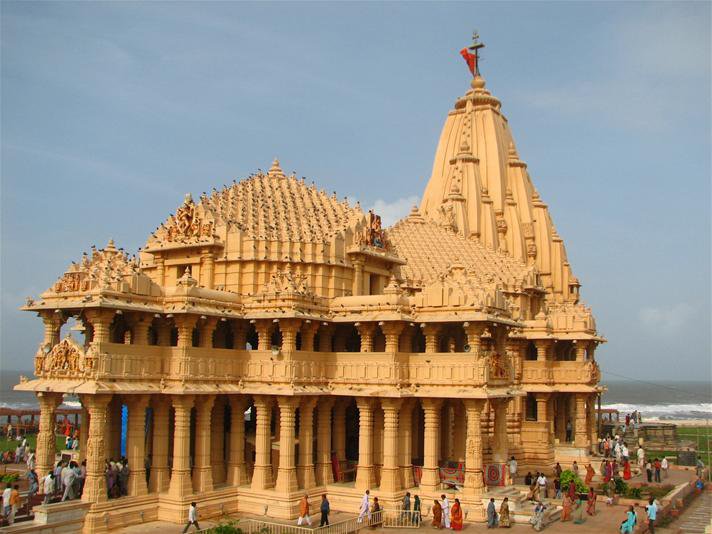
The Rashtrakutas of Manyakheta (750-983 A.D) further refined the style as seen in Ellora. It was epitomized by the Hoysalas (1000-1330 A.D) most temples built in Halebid, Belur and Somnathapura are superb examples of Vesara style.
Temple Symbolism
The temple concept is a curious mixture of Vedic, tantric and Agama principles. The tantra regards the human body as a Mandala. Here it is chara or mobile. The agama shastras also regard the temple as a Mandala, but here it is a chala or immobile. The analogy of the temple with the human body finds a closer relationship when the architecture of the temples is keenly observed.
Most often, the temple is seen as a relationship between man and God; the link between the actual and the ideal. Hence the temple is usually called a Devalaya, the abode of God or a Prasada, which means a very pleasing arena or palace.
Thus the symbolism of the temple is conceived in several layers. One, the temple complex is compared to a human body in which God resides. The other symbolism associated with the Vimana is looked upon as the body of the deity. The last symbolism is its comparison to a Sri Chakra.
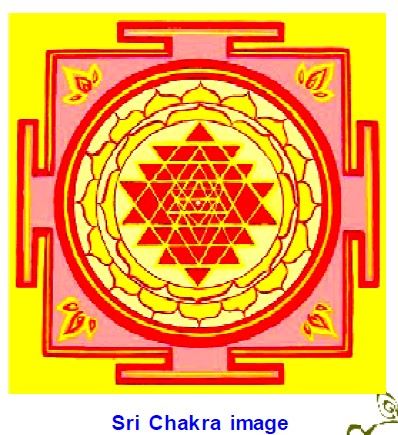
Very often the ground plan of a temple is a Mandala. Just as the Sri Chakra is the unfolding of the Bindu at its centre, the temple is the expansion of the deity residing in the Brahmasthana at the centre. The Chakra structure employs the imagery of an all-enveloping space and time continuum issuing out of the womb.
Thus, the centre of the Sri Chakra, Bindu is dimensionless. Therefore it is an imperceptible source of energy. The icon or the Vigraha in the Garbagriha or Sanctum is a manifestation of the imperceptible energy and radiates the same.
The devotee circumambulates in the Avarana or Prakaras and his only goal is to reach the Lord residing serenely within the Garbagriha. This is a representation of the One cosmic principle.
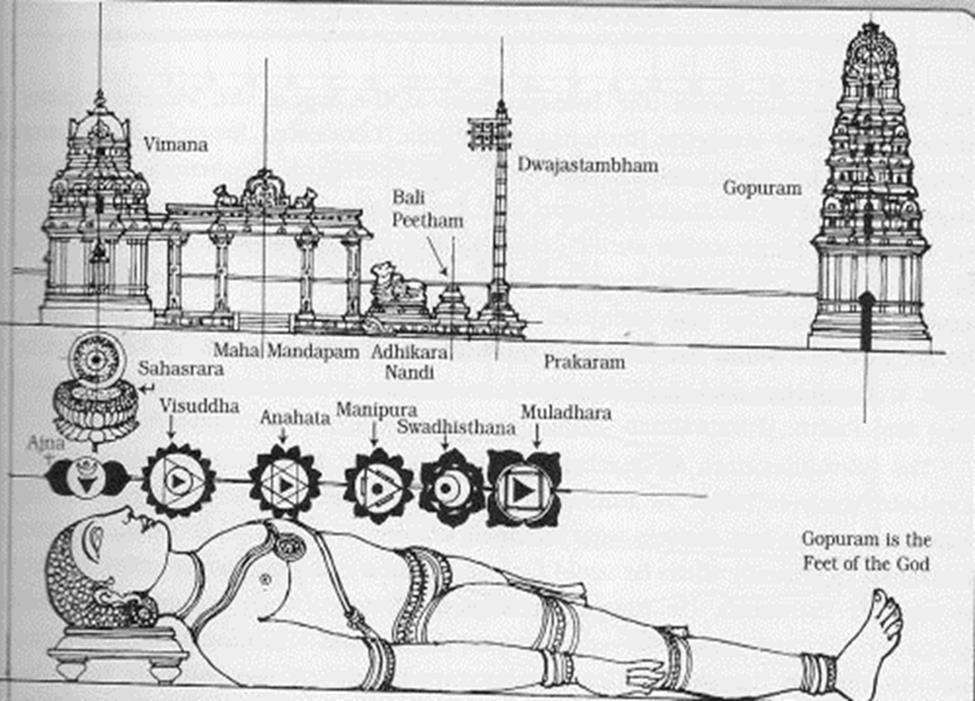
Human Body as a Temple
The analogy explains that the human body is a temple in which Antaryami resides. The same analogy is extended to explain the various parts of the body representing various aspects of the temple.
- The forehead represents the Sanctum and the head represents the tower or Shikhara.
- The space between the eyebrows, the ajna chakra is the seat of divinity.
- The finial of the tower is the unseen Sahasrara located above the head.
- This is the passage through which the currents of life ascend to the tower through the stone slab called Brahma Randhra Shila.
- The images of vehicles or emblems that represent the icon inside the Sanctum are placed on the four corners of this slab.
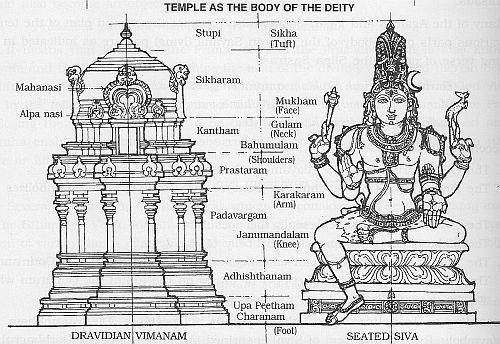
The third concept of temple symbolism is the concept of Vimana or the central part of the temple as the physical form of God.
- The sukhanasi or Ardhamandapa in front of the Garbagriha is the nose;
- Antarala is the neck;
- various mandapas are the body;
- Prakaras are the hands and so on.
- Vertically, the Garbagriha represents the neck, and the Shikara (superstructure) over the Garbagriha is the head.
- The Kalasha (finial) is the tuft of hair.
